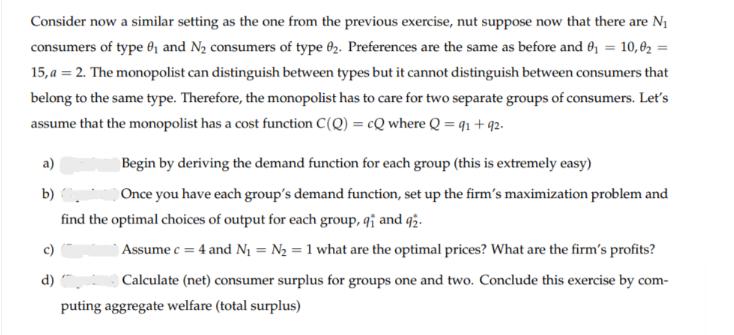Answered step by step
Verified Expert Solution
Question
1 Approved Answer
Consider now a similar setting as the one from the previous exercise, nut suppose now that there are N consumers of type and N

Consider now a similar setting as the one from the previous exercise, nut suppose now that there are N consumers of type and N consumers of type 02. Preferences are the same as before and = 10,0 = 15,a=2. The monopolist can distinguish between types but it cannot distinguish between consumers that belong to the same type. Therefore, the monopolist has to care for two separate groups of consumers. Let's assume that the monopolist has a cost function C(Q) = cQ where Q = 91 +92. a) b) d) Begin by deriving the demand function for each group (this is extremely easy) Once you have each group's demand function, set up the firm's maximization problem and find the optimal choices of output for each group, q and 2. Assume c=4 and N = N = 1 what are the optimal prices? What are the firm's profits? Calculate (net) consumer surplus for groups one and two. Conclude this exercise by com- puting aggregate welfare (total surplus)
Step by Step Solution
There are 3 Steps involved in it
Step: 1
a Deriving the demand function for each group For group ...
Get Instant Access to Expert-Tailored Solutions
See step-by-step solutions with expert insights and AI powered tools for academic success
Step: 2

Step: 3

Ace Your Homework with AI
Get the answers you need in no time with our AI-driven, step-by-step assistance
Get Started


